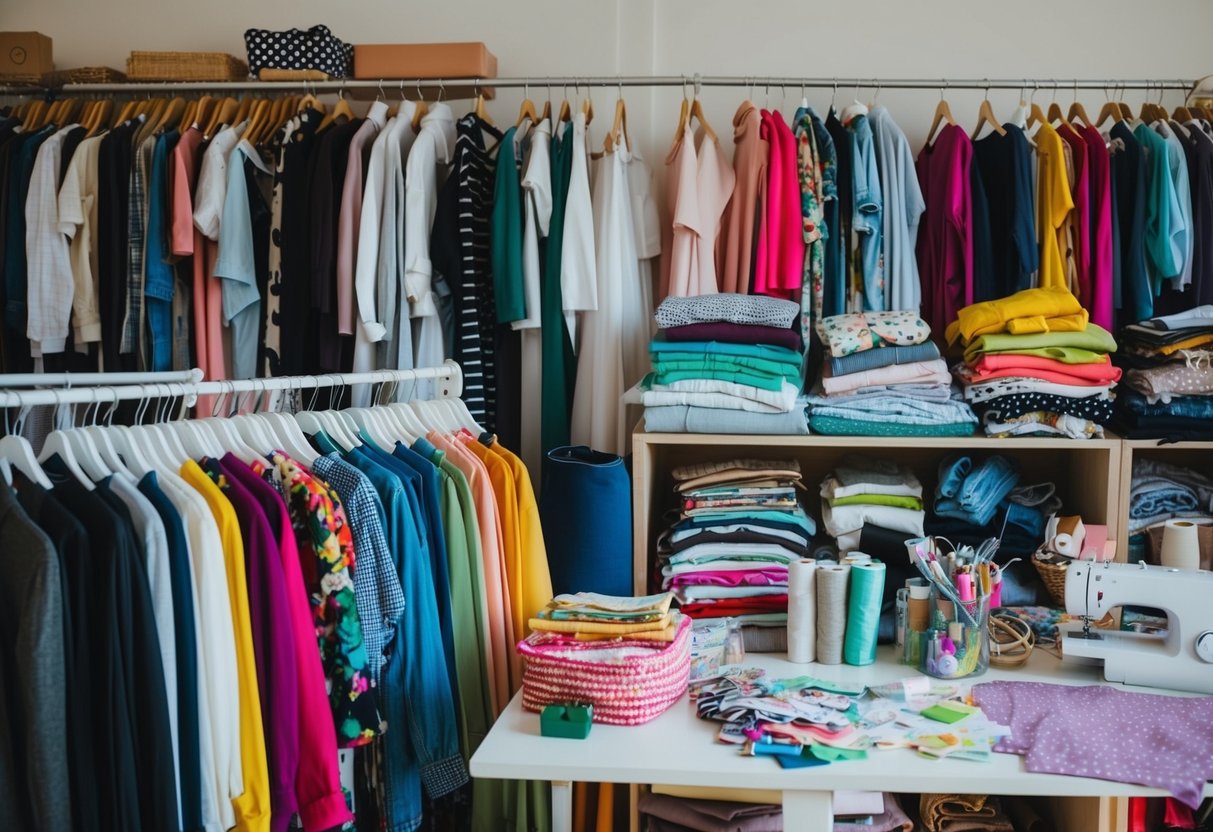Eco-Friendly Fashion on a Budget: Top DIY Clothing Hacks
Shopping at Thrift Stores

Thrift stores offer sustainable fashion options for those on a budget. Shoppers can uncover unique pieces and ensure quality finds by knowing how and where to look.
Finding Unique Pieces
Thrift stores often house hidden gems that can add individuality to any wardrobe. An exploration of these shops may lead to discovering vintage clothing, designer labels, or one-of-a-kind accessories. When looking for standout items, it is beneficial to keep an open mind and consider unconventional pieces that can be adapted into current fashion trends.
Understanding the layout of the store can also be helpful. Areas dedicated to specialty sections, such as vintage or retro styles, can be treasure troves. Some stores may even have a separate section for premium labels, providing affordable access to higher-end items. Engaging with store staff for insights on new arrivals or lesser-known sections can prove fruitful in snagging elusive finds.
Thrifting Tips for Quality Finds
Finding quality clothing in thrift stores requires a discerning eye. Checking the condition of garments, such as seams, buttons, and zippers, is essential to ensure long-term use. Fabrics like wool, cotton, and denim often prove more durable, enhancing the longevity of thrifted items.
Trying on clothes whenever possible can help in assessing fit and comfort, which are critical aspects of fashion. Regular visits to thrift stores enhance the chance of finding high-quality items, as inventory constantly changes. Being aware of restocking days or special sales ensures better opportunities for acquiring valuable fashion pieces at lower prices.
Hosting a Clothing Swap
Clothing swaps are an eco-friendly way to refresh wardrobes without spending money. Creating a successful event requires careful organization and offers participants a chance to exchange fashion items sustainably.
Organizing a Swap Event
When planning a clothing swap, choosing a suitable venue is crucial. Community centers, local parks, or even spacious living rooms can work well. Ensuring enough space for attendees to browse comfortably should be a priority.
It’s beneficial to set clear guidelines for what items can be swapped. Clothing should be gently used and clean, with consideration for seasonal needs. Encouraging participants to bring a set number of items helps maintain balance and variety.
Promotion plays a key role. Using social media platforms enables easy sharing of event details. Creating a small flyer with essential information like date, time, and location helps spread the word. Asking attendees to RSVP can assist in knowing how many people to expect.
Maximizing Wardrobe Exchange
To make the most of a clothing swap, organizers can create defined sections for different clothing types. This method streamlines the browsing process, ensuring participants can find specific items quickly. Including mirrors can also assist people in making decisions.
Offering refreshments creates a welcoming atmosphere. Small snacks and drinks can encourage mingling, allowing attendees to exchange fashion tips and ideas.
Having a plan for leftover clothes is important. Donating unswapped items to local charities contributes to the eco-friendly aspect of the event and ensures that nothing goes to waste. By following these strategies, a clothing swap can become a joyful and sustainable fashion solution.



